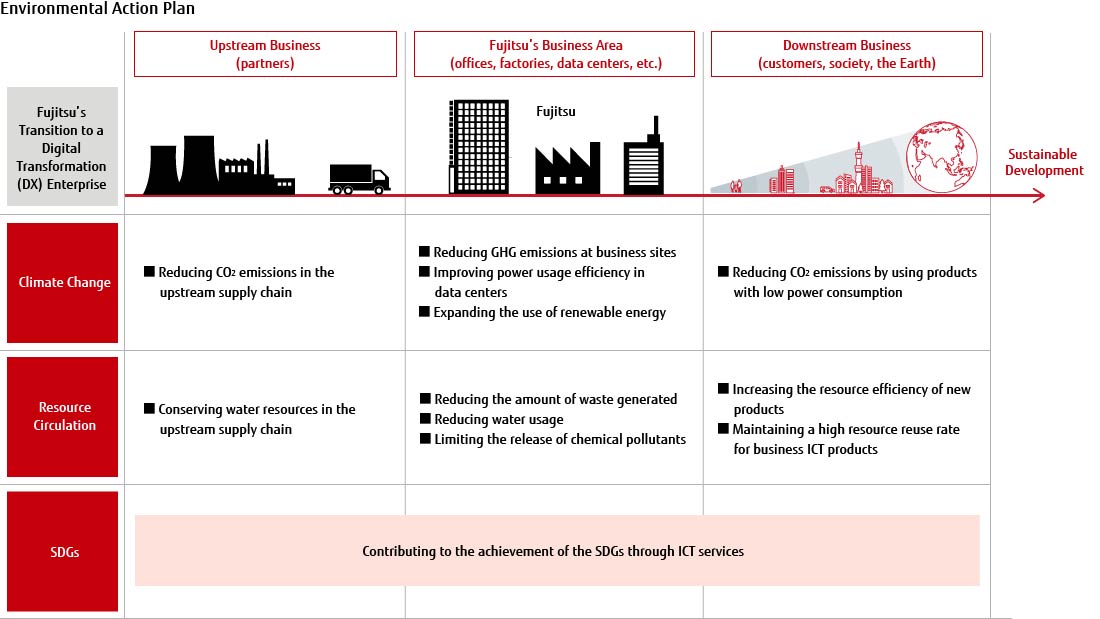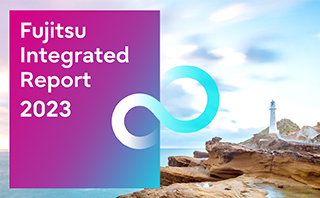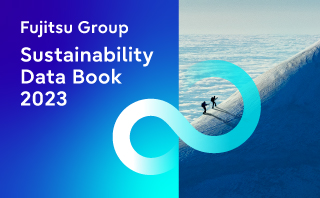-
Sustainability at Fujitsu Group
-
Global Responsible Business
- Environment
-
- Environmental Management
- The Fujitsu Group Environmental Vision on Climate Change
- Living in Harmony with Nature (Conservation of Biodiversity)
- Environmental Action Plan
- Environmental Data
- Environmental Communication
- Environmental Social Activities
- Disposal and Recycling of ICT products
- Environmental Considerations in ICT Products
- Governance
-
Data and Documents
- Fujitsu Group Sustainability Data Book 2023
- Social, Governance and Environmental data
- Independent Assurance Report

- GRI Standards / United Nations Global Compact (UNGC) principles Comparison Table
- SASB Standards Comparison Table
- Sustainability Data Book Framework
- Link to regions responsible business reports
- Contact
- Sitemap
Fujitsu Group Environmental Action Plan (Stage IX)
With the goal of achieving a decarbonized society, global initiatives such as Science Based Targets and RE100 are at the forefront of growing calls for reductions in greenhouse gas (GHG) emissions and greater use of renewable energy. In addition, restrictions on importing waste plastics by some Asian nations and the problem of marine plastic pollution have made the management of plastic waste an international issue. On a positive note, there is enhanced corporate focus on contributing to the SDGs and heightened expectations of seeing the SDGs incorporated into more business strategies.
In light of this background, the Fujitsu Group formulated Stage IX of its Environmental Action Plan (FY 2019-2020) based on a structure of four critically important categories. To address issues in the supply chain and in three areas of societal challenge, namely climate change, resource circulation and the SDGs, a total of 11 targets were set. These are described in the tables below.
In terms of climate change, for example, we have defined milestones for our targets in the FUJITSU Climate and Energy Vision (*1) and under global initiatives, and we have specified key performance indicators and tasks to achieve those targets. As part of these efforts, we are working to drive improvements in power usage effectiveness and to strategically boost the use of renewable energy in data centers – a sector generally forecast to record significant growth in GHG emissions.
We are focusing our resource circulation efforts on reducing waste linked to plastics used in packaging, while also continuing to cut the volume of waste generated during manufacturing and to work on other initiatives, including conserving and recycling resources in ICT products.
The Fujitsu Group is consolidating activities throughout its supply chain to ensure that the environmental impacts and risks related to climate change and resource conservation are understood and mitigated. We are also continuing to contribute to the achievement of the SDGs through the provision of ICT services.
- (*1)FUJITSU Climate and Energy Vision – Refer to this website for details

Climate Change
| Targets (till the end of FY 2020) | Results for FY 2020 |
|---|---|
| 1. Reduce greenhouse gas (GHG) emission from business sites by more than 14% (compared to FY2013).
Reduce GHG emission by 2.1% year-on-year through voluntary efforts. | 32.7% reduction and 2.4% reduction through voluntary efforts |
| 2. Improve PUE (Power Usage Effectiveness) (*2) of our data centers by 2% or more compared to FY 2017. | 2.0% improvement |
| 3. Increase renewable energy usage by more than 20% compared to FY2017. | 22.2% increase |
Resource Circulation
| Targets (till the end of FY 2020) | Results for FY 2020 |
|---|---|
| 4. Promote eco design for resource saving and circulation and increase resource efficiency of newly developed products by 25% or more (compared to FY 2014). | 27.5% increase |
| 5. Reduce amounts of waste generated by an average of more than 5% compared to FY 2012-2014 (14,226 t/year). | 34% reduction |
| 6. Maintain over 90% resource reuse rate of business ICT equipment. | 91.6% achievement |
| 7. Reduce total water usage by 1% compared to FY2017. | 2.2% reduction |
| 8. Limit the release of chemical pollutants (PRTR) to less than the average of FY 2012-2014 (Target 17.4t/year or less). | 6.1 tons |
Supply Chain
| Targets (till the end of FY 2020) | Results for FY 2020 |
|---|---|
| 9. Reduce CO2 emission due to power consumption during product usage by more than 14% (compared to FY2013). | 37% reduction |
| 10. Drive activities to reduce CO2 emissions and conserve water resources in the upstream supply chain. |
|
SDGs
| Targets (till the end of FY 2020) | Results for FY 2020 |
|---|---|
| 11. Contribute to the achievement of SDGs through ICT services. |
|
- (*2)PUE (Power Usage Effectiveness): An indicator of the efficiency of electric power usage by the data center. This value is calculated by dividing the data center's total electric power consumption by the electric power consumption of servers and other ICT devices. The closer the value is to 1.0, the higher is the efficiency.
RELATED LINKS
- Fujitsu Group Environmental Action Plan (Stage VIII)
https://www.fujitsu.com/global/about/environment/approach/plan/stage8/ - Fujitsu Group Environmental Action Plan (Stage VII)
https://www.fujitsu.com/global/about/environment/approach/plan/stage7/ - Fujitsu Group Environmental Protection Program (Stage VI)
https://www.fujitsu.com/global/about/environment/approach/plan/stage6/ - Fujitsu Group Environmental Protection Program (Stage V)
https://www.fujitsu.com/global/about/environment/approach/plan/stage5/ - Fujitsu Group Environmental Protection Program (Stage IV)
https://www.fujitsu.com/global/about/environment/approach/plan/stage4/ - Fujitsu Group Environmental Protection Program (Stage III)
https://www.fujitsu.com/global/about/environment/approach/plan/stage3/


